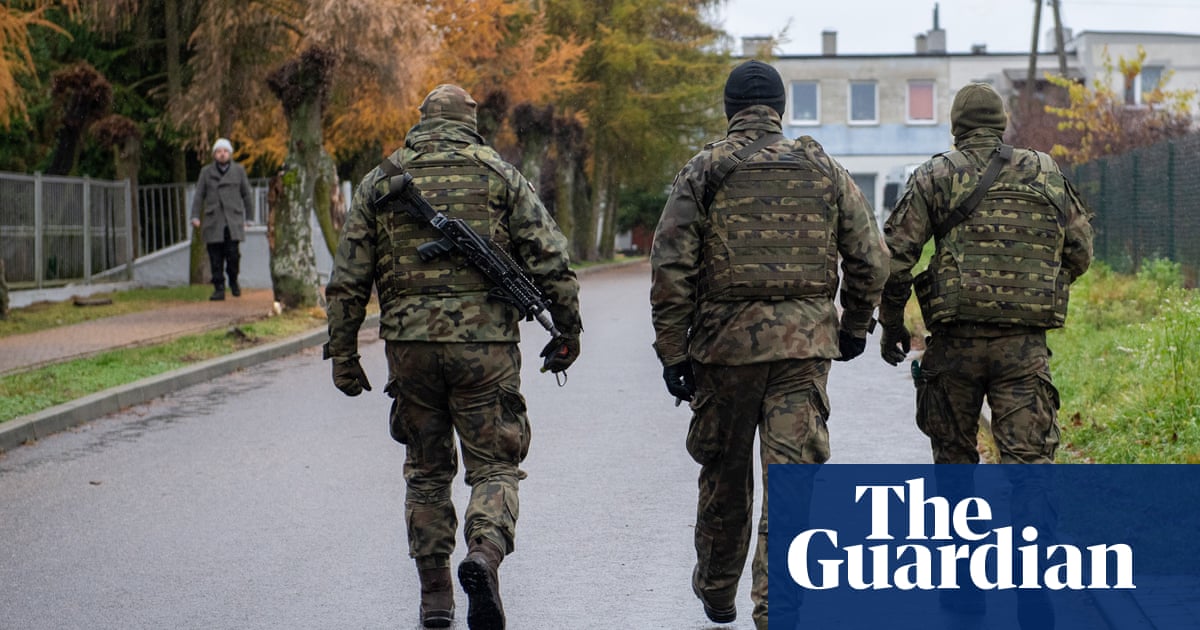Baltic states leave Russian power grid in closer EU integration

The three Baltic states have disconnected their electricity systems from Russia’s power grid as part of a plan designed to integrate the countries more closely with the EU and boost security.
Estonia, Latvia and Lithuania disconnected from the IPS/UPS joint network on Saturday. Subject to last-minute tests, they will synchronise with the EU’s grid at 12.00 GMT on Sunday after operating on their own in the interim.
The European Commission president, Ursula von der Leyen, will speak at a ceremony on Sunday to mark the switch to the EU system.
“We’ve reached the goal we strived for, for so long. We are now in control,” the Lithuanian energy minister, Žygimantas Vaičiūnas, told a press conference.
Immediately after disconnecting, Latvian workers used a crane to reach the high-voltage wires in Vilaka, close to the Russian border, and cut them. They handed out chopped wire as keepsakes to cheering onlookers.
“We will never use it again. We are moving on,” Latvia’s energy minister, Kaspars Melnis, said.
Plans for the Baltics to decouple from the grid of their former Soviet imperial overlord, which have been debated for decades, gained momentum after Moscow’s annexation of Crimea in 2014.
The grid was the only remaining link to Russia for the three countries, which re-emerged as independent nations in the early 1990s after the fall of the Soviet Union, and joined the EU and Nato in 2004.
The three staunch supporters of Kyiv stopped buying power from Russia after Moscow’s full-scale invasion of Ukraine in 2022, but have relied on the Russian grid to control frequencies and stabilise networks to avoid outages.
“By ending the energy dependence of the Baltic states on Russia, we are leaving the aggressor without the option of using energy as a weapon against us,” the Estonia’s foreign minister, Margus Tsahkna, said.
An army truck was seen at the Rezekne power substation near the Latvia-Russia border, and officers with guns were patrolling the vicinity and in the nearby town, indicative of Baltic worries of attempted sabotage to the switch.
The Baltic Sea region is on high alert after power cable, telecom links and gas pipeline outages to Sweden or Finland. All were believed to have been caused by ships dragging anchors along the seabed after Russia’s invasion of Ukraine. Russia has denied any involvement.
“The system is stable, the process is happening smoothly, no one is noticing that something changed,” Melnis said.
Maintaining a constant power supply requires a stable grid frequency, which can more easily be obtained over time in a large synchronised area such as Russia or continental Europe, compared with what the Baltics can do on their own, analysts say.
Lithuania’s energy ministry said it has drawn up contingency plans whereby some heavy energy users, such as factories, could be temporarily disconnected from the grid in the event of power shortages to maintain essential supplies.
For Russia, the decoupling means its Kaliningrad exclave, located between Lithuania, Poland and the Baltic Sea, is cut off from Russia’s main grid, leaving it to maintain its power system alone.
The Baltic countries have spent nearly €1.6bn since 2018 to upgrade grids to prepare for the switch, while Russia has spent 100bn roubles ($1bn), including on the building of several gas-fired power plants in Kaliningrad.
Related
A New Book Argues That What Happens in Europe Doesn’t…
Remaking the World: European Distinctiveness and the Transformation of Politics, Culture, and the Economy by Jerrold Seigel “No issue in world
Poland plans military training for every adult male amid growing…
Poland’s prime minister, Donald Tusk, has said his government is working on a plan to prepare large-scale military training for every adult male in response t
2025 European Athletics Indoor Championships: Ditaji Kambundji secures women’s 60m…
Switzerland’s Ditaji Kambundji walked away from the 2025 European Athletics Indoor Championships in Apeldoorn on 7 March with much more than her first Europea
Takeaways from the EU’s landmark security summit after Trump said…
BRUSSELS (AP) — European Union leaders are trumpeting their endorsement of a plan to free up hundreds of billions of








